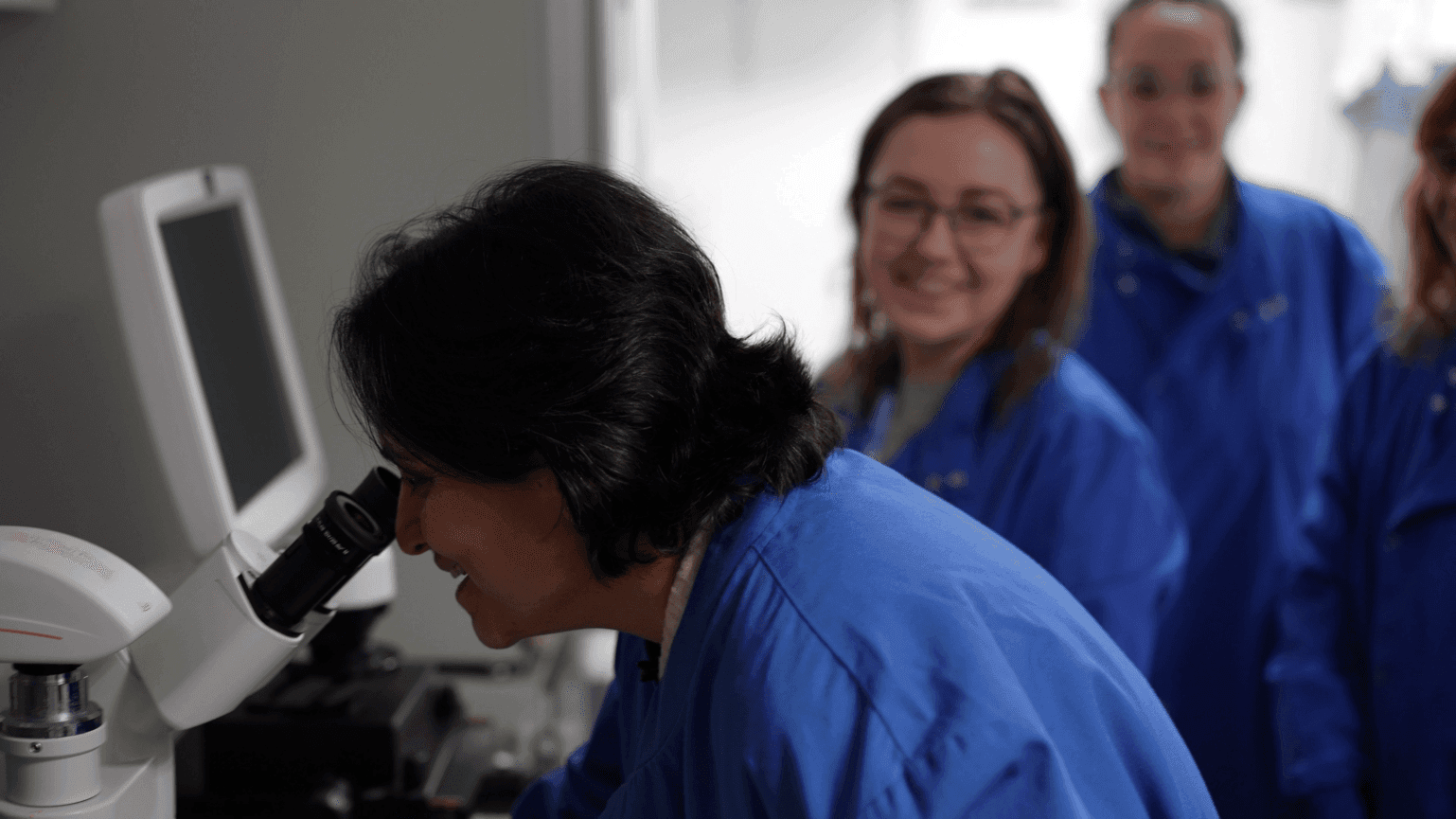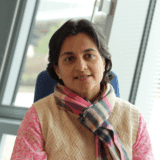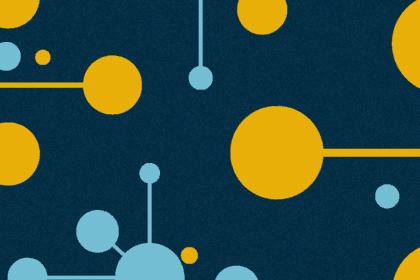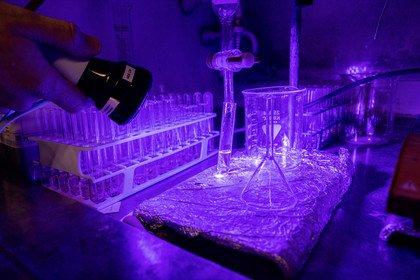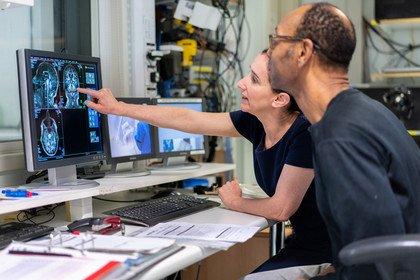
Transforming the ways we diagnose, monitor and treat diseases. A source of information for generating cells for clinical therapy, like stem cells or bone marrow transplants. The potential to regenerate hair.
These are just some of the future breakthroughs that could spring from the Human Cell Atlas, the global, multi-year effort to create reference maps of all the cell types in the human body – the fundamental units of life.
Wellcome is proud to be among the global funders of this ambitious project through our Discovery Research Programme.
Wellcome supports bold and creative discovery research that has the potential to improve human life, health and wellbeing.
We have three recurring funding awards:
Explore our one-off funding awards:
What is the Human Cell Atlas?
The first version of the Human Cell Atlas will integrate cell maps of different organs and tissues from 18 biological networks. It will advance our understanding of the human body in ways not previously possible and will in time become a comprehensive map of the entire body.
"You can think of it as kind of like a Google Map, where you can zoom in from the whole body to the organ to tissue to cell level, and that has profound implications for understanding healthy biology and what goes wrong in disease," Dr Sarah Teichmann, Head of Cellular Genetics at the Wellcome Sanger Institute and co-founder and co-chair of the Human Cell Atlas Organising Committee, explained in a conversation with us about the project.
"Based on that map concept, you can also think of it as a guidebook for an organ and, in fact, for the whole body."
The Human Cell Atlas is being created through a process of mapping and profiling all the different cell types in the body using advanced genomic methods, such as identifying genes that are active in individual cells, alongside data science methods.
This process enables the creation of consensus reference datasets of the different cell types in various tissues and systems in the human body – the lung, heart, skin, kidney and so on – and at very detailed cellular and molecular levels. The complete Human Cell Atlas will be based on around ten billion cells across all our organs and tissues, accounting for repeated cell types.
"The DNA is identical in almost every single cell in our body. And of course, the Human Genome Project gave us the genetic code," said Teichmann. "But which genes are switched on in a muscle cell versus a neuron? That's what the Human Cell Atlas project is aiming to resolve."
What is the Human Genome Project?
The Human Genome Project was a curiosity-driven research project created to study all of the DNA (also known as a genome) of a select set of organisms. Its signature achievement was generating the first sequence of the human genome. This valuable resource gave foundational knowledge of the human blueprint and ultimately led to medical advancements.
Work on the Human Genome Project took 13 years to complete – from October 1990 to April 2003 – and was an international effort that included the Wellcome Sanger Institute. They were the only British organisation involved in the project and carried out nearly one-third of the work, making them the largest single contributor.

A team from the Human Cell Atlas shows their work in the lab.
Patrick Shepherd / Wellcome
How the Human Cell Atlas is transforming health
The global community of 3,000 scientists has so far profiled tens of millions of individual cells from about 10,000 different people. The full comprehensive atlas is expected to take another five to ten years to finish.
But the Human Cell Atlas doesn't need to be complete for it to start making an impact. Data is constantly being collected from scientists all over the world, is useable and freely available right now, and has already proved useful.
For example, there is now a Cell Atlas for the lung that’s shedding more light on lung-related diseases like asthma and fibrosis. In fact, early Human Cell Atlas lung data was used as a resource at the start of the Covid-19 pandemic, which led to insights on how the SARS-CoV-2 virus entered the body and had implications on wearing masks.
Pressing play on the video above will set a third-party cookie. Please read our cookie policy for more information.
Professor Muzlifah Haniffa, Senior Group Leader, Human Cell Atlas:
The impact of this project is enormous. Once you know how we function, what keeps us healthy, we'll be able to understand how things go wrong, and prevent disease, design new treatments, but also how to build organs, for example, for organ transplantation.
My name is Muzz Haniffa, I'm a Wellcome Senior Clinical Fellow and Senior Group Leader at the Wellcome Sanger Institute, and I study how the human body is built.
One of the projects that I'm working on is the Human Cell Atlas. Essentially, the human body is made up of 37 trillion cells. That's a huge number of cells, and what we're trying to do is to profile and map the characteristics of each of these individual cells, and how they work together to allow the body to function as a whole.
What you're seeing here is skin as an organ that has been grown from stem cells, and you can see here these fine hair follicles. The way we've learned how to grow this skin has been informed by our findings from the human cell atlas, and what you can now do with this type of model is to use it for skin transplant, for example. You can also use it to understand how skin heals following wounding, how we can regenerate skin, and how skin responds to environmental challenges.
The science is not just then contained within Sanger. Anyone around the world can publicly access the data, and this is where I see a lot of equity in science. This type of work is very important in terms of how we're really going to make the advances that will benefit patients.
Dr. Jimmy Tsz Hang Lee, Postdoctoral Fellow, Human Cell Atlas:
With the Human Cell Atlas we’re aiming to generate a reference map of every single cell in the human body. I'm Jimmy Lee, a postdoctoral fellow at the Cellular Genetics Programme. My main research questions will be what is the dynamic within the cell community in early stage of brain development, especially foetal development, and also what could go wrong with their communication when it becomes diseased?
We are trying to combine single cell technology, and also spatial transcriptomic technology. Imagine human organ is just like a village. So, the single cell technology is like doing a survey with every people living in the village. Whereas spatial transcriptomic is more like looking at the village on top and to take a very high resolution of snapshot. We can combine the spatial information with the single cell information to have broader understanding of how an organ works in the human body.
Behind the glass is the data farm. It’s actually a high performing computer which analyse tons of genomic data. It helps us to solve complex biological questions for analysis within just minutes or hours, which usually takes years on a local computer.
Professor Muzlifah Haniffa:
This type of research forms the foundations to really begin to understand the human body, how it maintains health, how it responds to challenges, and also degenerative diseases, and then taking it to the clinic for improving how we diagnose patients, how we decide what treatment patients should take, and how we cure patients.
By addressing the gaps in our knowledge on the roles of sleep and circadian rhythm disturbance in the development and resolution of these mental health conditions, it could pave the way for new and improved interventions as well as timely detection that could impact many people’s quality of life.
In another example, much progress is being made with the Heart Atlas. The team has already profiled cell types in the heart that coordinate a heartbeat. This could have huge implications on our understanding of cardiac diseases.
Prof Muzlifah Haniffa, Researcher and Dermatologist and member of the Human Cell Atlas Organising Committee, is looking forward to how the Skin Atlas could help scientists learn more about skin diseases like psoriasis and eczema.
"Skin diseases affect so many of us. It's a huge socioeconomic burden and sometimes you can have many different types of inflammatory skin diseases like eczema and psoriasis that can look similar and can be difficult to diagnose," Haniffa explained.
"I think what the Human Cell Atlas allows you to do is to take the disease setting and compare it against healthy skin. So what actually went wrong, what happens after response to treatment, and why does skin disease occur in the same places, is there some sort of memory being retained? These are the sort of questions that we can begin to answer and it can make a massive impact on health and disease."
The Human Cell Atlas might also serve as a blueprint for using stem cells to create skin in a laboratory.
“If we really know how hair forms or how blood vessels in the skin form, we can begin to actually use this information to create hair follicles that can generate,” Haniffa said.
“We could make skin that can help patients who have extensive burns. You could have your own stem cells making skin and being transplanted onto the person who had the burn. I think there are just so many applications.”
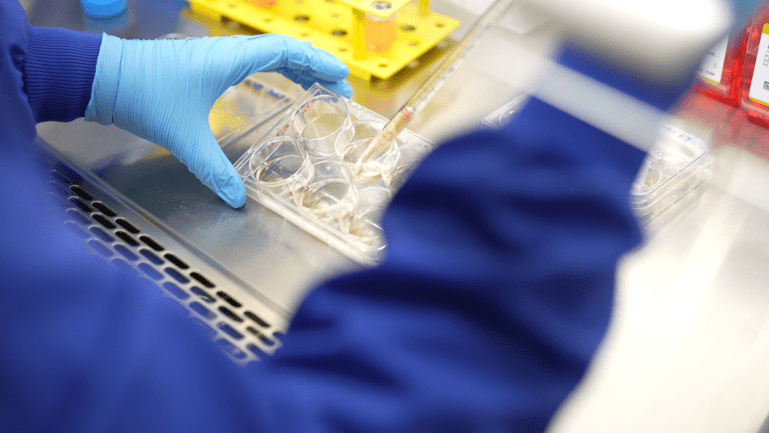
A researcher works on the Human Cell Atlas inside a lab.
Patrick Shepherd / Wellcome
A globally representative atlas
The Human Cell Atlas is intended to benefit all of humanity. As such, it's crucial that the project is representative of as much of the world as possible and supports equity in science.
Haniffa highlighted the importance of establishing the Human Cell Atlas Equity Working Group from the start to lead global community building among the scientists and contributors in their network.
"The Human Cell Atlas was always going to be an atlas for everyone in the world," said Haniffa, who is also a member of the Equity Working Group. "So it really can't be done by just one group of people."
So far, they've established networks of scientists in Asia, Latin America and Africa that contribute to the Atlas. These local networks participate in exchanges of expertise and knowledge as well as trainings, allowing researchers to locally generate and analyse data for the Atlas. There are now more than 3,000 Human Cell Atlas members from 97 countries worldwide.
Besides ensuring accessibility of contributing data, the project also prioritises making all Human Cell Atlas data user-friendly and accessible for anyone anywhere.
"We talked a lot about providing the data in a fair, equitable and accessible manner. But what you really want is data that's going to be so easy to use that all you need is the Internet," Haniffa explained.
"You yourself could navigate, browse and find out more about the cells in your body and find out more how things may go wrong in disease."
Discovery Research to shape the future
The Human Cell Atlas is an enormously ambitious project in its scope and scale. But it is ultimately driven by curiosity. This is the kind of research Wellcome supports through our Discovery Research Programme and Directed Activity. We want to give researchers the space to pursue knowledge in unexpected places and make new breakthroughs that could have major implications for our health.
"As human beings and especially as scientists we want to understand how the world works, how our bodies work and we're just driven by that innate curiosity that's sort of childlike sometimes," Teichmann explained the importance of discovery research.
"So we use telescopes to understand, to look at the sky. We voyaged to the moon. We use microscopes to look at cells and samples of living organisms. And really, the Human Cell Atlas is like one gigantic microscope to understand the cells in our body in a huge amount of detail."
A first draft of the Human Cell Atlas is expected to come in the next two years. There's no limit to the potential applications and advancements that can come from it.
More transformative research like it is vital to advance our understanding of health and help tackle the world's urgent health challenges.
"As a clinician, what I really want is to be working on something that's really going to improve health and save lives," Haniffa said.
"This is really what I feel is fundamentally needed for the next revolution and transformation in science that's going to really benefit mankind."
